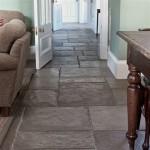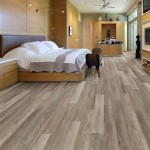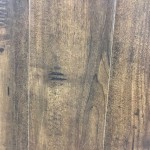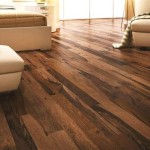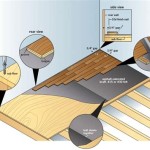Laminate Tile Flooring Reviews: A Comprehensive Guide
Laminate tile flooring has emerged as a popular alternative to traditional ceramic or porcelain tile, offering a balance of aesthetic appeal, durability, and affordability. These floors replicate the look of genuine tile through photographic images layered beneath a protective wear layer. Understanding the strengths and weaknesses of laminate tile flooring is crucial for making informed decisions before installation.
This article provides a detailed review of laminate tile flooring, covering its features, advantages, disadvantages, installation considerations, maintenance requirements, and a comparison against other flooring options. The aim is to equip readers with the knowledge necessary to evaluate whether laminate tile flooring aligns with their specific needs and preferences.
Key Features of Laminate Tile Flooring
Laminate tile flooring is typically composed of four primary layers: a base layer (also known as the backing layer), a core board, a decorative layer, and a wear layer. Each layer contributes to the overall performance and appearance of the flooring.
The base layer provides stability and moisture resistance, helping to prevent warping or buckling. The core board, often made of high-density fiberboard (HDF) or medium-density fiberboard (MDF), provides the structural integrity of the tile. The decorative layer is a high-resolution photographic image that mimics the look of ceramic, porcelain, or stone tile. This layer is responsible for the tile's visual appeal. The wear layer, a transparent coating made of melamine resin with aluminum oxide particles, protects the decorative layer from scratches, stains, and fading.
The thickness of the wear layer is a significant indicator of the flooring's durability. Thicker wear layers offer better protection against wear and tear, making them suitable for high-traffic areas. Laminate tile flooring is available in various thicknesses, typically ranging from 6mm to 12mm. Thicker planks generally provide better sound insulation and a more solid feel underfoot.
Laminate tile flooring is often designed with interlocking edges, allowing for a “floating floor” installation. This means the tiles are not glued or nailed to the subfloor, but rather click together to form a continuous surface. This simplifies the installation process and makes it a popular choice for DIY projects.
Advantages of Laminate Tile Flooring
Laminate tile flooring offers numerous benefits that make it an attractive option for homeowners and commercial property owners alike. These advantages stem from its construction, materials, and installation methods.
One of the primary advantages is its cost-effectiveness. Laminate tile flooring is generally less expensive than genuine ceramic, porcelain, or stone tile. This makes it a budget-friendly alternative for those seeking the aesthetic of tile without the high price tag. The lower material costs, combined with potentially lower installation costs due to the ease of installation, contribute to significant savings.
Durability is another key advantage. The wear layer protects the underlying decorative layer from everyday wear and tear, including scratches, stains, and fading. While not as scratch-resistant as some high-end ceramic or porcelain tiles, laminate tile flooring can withstand moderate to heavy foot traffic, making it suitable for living rooms, bedrooms, and hallways. The durability also contributes to its longevity, providing a long-lasting flooring solution with proper maintenance.
Ease of installation is another significant benefit. The interlocking design allows for a relatively simple installation process, often requiring minimal tools and experience. Homeowners can often install laminate tile flooring themselves, saving on professional installation costs. The floating floor installation method also means that the flooring can be installed over existing subfloors, as long as the subfloor is level and in good condition.
Maintenance is also relatively simple. Laminate tile flooring is easy to clean and maintain, requiring only regular sweeping or vacuuming and occasional damp mopping. The wear layer is designed to resist stains and spills, making it easy to keep the flooring looking its best. Harsh chemicals and abrasive cleaners should be avoided, as they can damage the wear layer.
Aesthetic versatility is another noteworthy advantage. Laminate tile flooring is available in a wide range of colors, patterns, and textures, mimicking the look of various types of tile, stone, and even wood. This allows homeowners to choose a flooring option that complements their existing décor and personal style. The high-resolution photographic layer ensures a realistic and visually appealing appearance. Some laminate tiles even feature embossed textures that mimic the feel of natural materials.
Disadvantages of Laminate Tile Flooring
While laminate tile flooring offers numerous advantages, it also has some limitations that should be considered before making a purchase. These disadvantages relate to its moisture resistance, repairability, and overall lifespan compared to traditional materials.
Moisture resistance is a primary concern. While the base layer provides some moisture resistance, laminate tile flooring is not waterproof. Excessive moisture can seep into the seams between tiles or through the core board, causing swelling, warping, and ultimately, damage to the flooring. Therefore, it is not recommended for use in areas with high moisture levels, such as bathrooms (especially near showers or bathtubs) or laundry rooms, unless specific water-resistant or waterproof laminate options are chosen. Spills should be cleaned up promptly to prevent moisture damage.
Repairability is another limitation. Unlike individual ceramic or porcelain tiles that can be replaced if damaged, laminate tile flooring is more challenging to repair. While minor scratches can sometimes be concealed with repair kits, more significant damage, such as chips or dents, may require replacing the entire tile or even a larger section of the floor. This can be a time-consuming and costly process. It's advisable to keep extra tiles on hand for potential repairs.
Lifespan is typically shorter compared to ceramic or porcelain tile. Although laminate tile flooring is durable, it generally does not last as long as high-quality ceramic or porcelain tiles. The wear layer can eventually wear down over time, especially in high-traffic areas, revealing the underlying decorative layer. The lifespan can vary depending on the quality of the flooring, the thickness of the wear layer, and the level of foot traffic. On average, laminate tile flooring can last between 10 and 25 years with proper care and maintenance.
Sound insulation may be less effective than with some other flooring options. Laminate tile flooring can sometimes transmit noise, especially in rooms with hard surfaces. This can be mitigated by using a quality underlayment that provides additional sound absorption. Some laminate tile products come with pre-attached underlayment for added convenience and sound dampening.
Environmental concerns surrounding the materials used in laminate tile flooring have also been raised. The core board is often made of MDF or HDF, which can contain formaldehyde, a known irritant. Look for laminate flooring that is CARB (California Air Resources Board) compliant, indicating that it meets stringent formaldehyde emission standards. Choosing products with certifications like FloorScore can ensure that they meet indoor air quality requirements.
Installation Considerations
Proper installation is critical to the performance and longevity of laminate tile flooring. Failure to follow the manufacturer's instructions can lead to issues such as warping, buckling, and premature wear.
Subfloor preparation is the first and often most important step. The subfloor must be clean, level, and dry. Any imperfections or unevenness can telegraph through the laminate flooring, creating an uneven surface and potentially damaging the tiles. Repair any cracks or holes in the subfloor before installation. It may be necessary to use a self-leveling compound to create a perfectly smooth surface.
Underlayment is almost always recommended. Underlayment provides a cushioning layer that reduces noise, improves comfort underfoot, and helps to protect the laminate flooring from moisture. Choose an underlayment that is appropriate for the specific type of laminate flooring being installed. Some underlayments also provide additional insulation properties.
Acclimation is a crucial step that is often overlooked. Laminate tile flooring should be acclimated to the room's temperature and humidity for at least 48 to 72 hours before installation. This allows the flooring to expand or contract to its natural size, preventing issues such as gaps or buckling after installation.
Correct tools are essential for a successful installation. A tapping block, pull bar, and spacers are necessary for properly interlocking the tiles without damaging them. A saw is needed to cut the tiles to fit around walls and obstacles. Always wear safety glasses and gloves during installation.
Expansion gaps should be left around the perimeter of the room and around any fixed objects, such as pipes or door frames. These gaps allow the flooring to expand and contract with temperature and humidity changes without putting pressure on the walls or other structures. The manufacturer's instructions will specify the appropriate size for the expansion gaps.
Maintenance and Care
Proper maintenance is essential for preserving the appearance and extending the lifespan of laminate tile flooring. Regular cleaning and preventative measures can help to protect the flooring from damage and keep it looking its best.
Regular sweeping or vacuuming is necessary to remove dirt, dust, and debris that can scratch the wear layer. Use a soft-bristled broom or a vacuum cleaner with a brush attachment to avoid scratching the surface. Avoid using vacuums with beater bars on laminate flooring, as they can damage the wear layer.
Damp mopping should be done periodically to remove dirt and grime. Use a microfiber mop and a laminate floor cleaner that is specifically designed for laminate flooring. Avoid using excessive water, as moisture can seep into the seams and damage the flooring. Wring out the mop thoroughly before mopping to prevent water from pooling on the surface.
Avoid using harsh chemicals, abrasive cleaners, or scouring pads, as they can damage the wear layer. Never use wax, polish, or oil-based cleaners on laminate flooring. These products can leave a dull film on the surface and make the floor slippery.
Protect the flooring from scratches and dents by using furniture pads under the legs of furniture. Place rugs or mats in high-traffic areas, such as entrances and hallways, to prevent dirt and debris from being tracked onto the flooring. Avoid wearing shoes with hard soles or high heels on laminate flooring.
Clean up spills immediately to prevent staining. Use a clean, damp cloth to blot up the spill. Avoid rubbing the spill, as this can spread it and make it more difficult to remove. For stubborn stains, use a laminate floor cleaner or a mixture of water and vinegar.
Control the humidity levels in the room. Excessive humidity can cause the laminate flooring to swell or warp. Use a dehumidifier in areas with high humidity. Avoid placing laminate flooring in areas that are exposed to excessive moisture, such as bathrooms or laundry rooms, unless specific water-resistant or waterproof options are chosen.

Waterproof Laminate Flooring Review Pros And Cons

Vinyl Vs Laminate Flooring Pros Cons And Differences Forbes Home

Project Source Laminate Review

Reviews For Shaw Cape May Paris 6 Mil X 7 In W 48 L Waterproof Lock Vinyl Tile Flooring 27 73 Sq Ft Case Pg 1 The Home Depot

My Vinyl Plank Floor Review Two Years Later Cutesy Crafts

Shaw Laminate Review Installation

Reviews For Shaw Cape May Paris 6 Mil X 7 In W 48 L Waterproof Lock Vinyl Tile Flooring 27 73 Sq Ft Case Pg 1 The Home Depot

Laminate Vs Hardwood Flooring Major Differences Forbes Home

Stock House Laminate Spc Flooring 17 52 Sq Ft Per Carton

Shaw Laminate Review Installation


